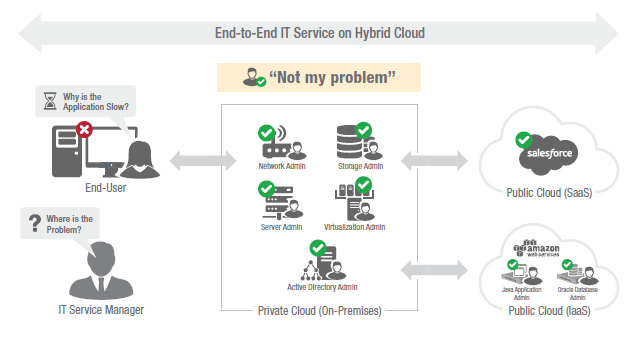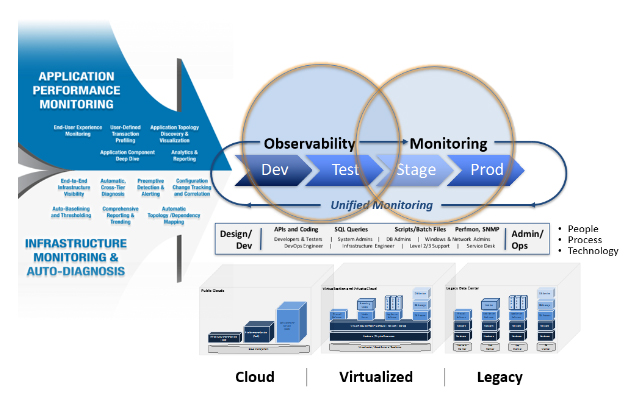 When I hear the word SIAM today, I think of two things. First, I think of Yul Brynner in The King and I….and second, I think of Service Integration and Management.
When I hear the word SIAM today, I think of two things. First, I think of Yul Brynner in The King and I….and second, I think of Service Integration and Management.
Service Integration and Management (SIAM) seeks to combine the benefits of best‐of‐breed based multi‐sourcing of services with the simplicity of single sourcing, minimizing the risks inherent in multi‐sourced approaches and masking the supply chain complexity from the consumers of the services.
The reference to The King and I was taken from a White Paper, Who is the King of SIAM?ii:
SIAM effectively puts the ‘balance of power’ back into the hands of the business or customer. SIAM exercises the power and controls of a monarchic solution (‘The King’). SIAM is not just a symbolic figurehead, it provides governance that commands the reverence and respect of each of the providers within the model.
The customer seeks the assurances provided by a governing King that it will deliver benefit. The King rules in accordance to the constitution and within the IT service delivery model. This is defined through strategy, policy, process, and autonomy over other providers in the model. SIAM provides the business with the necessary levers required to steer service provision – a valuable attribute, especially with the ongoing development of Cloud services and rapidly evolving business strategies.
But SIAM is not a dictator that rules through a contractual straightjacket for outsourcing. The SIAM model seeks to empower providers. It achieves this ostensibly through the effective control and governance of the process interfaces, setting quality criteria (based upon the customer’s policies and the authority delegated to SIAM) and ensuring on-going compliance to said criteria across provider groups. For the provider, this establishes a mandate that allows them to do the job they are obliged to do, without a detailed, procedural specification of how to do this.
Service Integration and Management and the Importance of Transparency
Understanding the difference between visibility and transparency will be critical to achieving effective service integration and management. Visibility is about what we can see—in a service management context this means what information we can get about the performance of digital business services. Visibility is essential for validating, justifying, directing and/or intervening (why we measure).
On the other hand, transparency is about knowledge—information is transformed into actionable intelligence and is shared with stakeholders. Transparency is about why we have validated, justified, directed or intervened.
Transparency is associated with governance and is the basis of organizational trust. So, from a SIAM perspective, this transparency must be applied across supplier relationships as well. Given the rate of change taking place with cloud services today, this is a significant challenge.
SIAM and Digital Service Performance Monitoring
The transparency needed to realize effective SIAM will require more than black-box monitoring. Having cloud service providers simply take the place of traditional on-premises silos won’t achieve SIAM. The ‘not my problem’ syndrome won’t be any less painful when we have even more suppliers (and less control), unless SIAM can create a single pane of glass that’s trusted by every supplier (internal and external).
In addition, business-driven IT will require a relentless focus on the customer experience:
In 2016, a Gartner survey revealed that 89% of business leaders viewed customer experience as the primary basis for competitioniii
Last year 75% of companies said their top objective was to improve customer experienceiv
This suggests that unified performance monitoring will be a critical component of successful SIAM. A critical element of unified monitoring is auto-diagnosis because without it, there is not only more time and effort required to sort out the truth, but there is also more potential for debate and disagreement as information is interpreted by different people.
Unified monitoring is most effective when there’s a single source of actionable truth. It’s what moves us away from diagnosis-related activities, and toward collaborating on how to establish self-healing properties when that diagnosis is identified.
User Experience and Business Transaction Tracing is not Enough
Using a real user monitoring (RUM) tool, we can track the experience of users accessing a web application. RUM tools also provide sufficient insight to identify whether an application is slow, and if so, where the problem lies: whether it is a front-end issue, a network issue, a content download problem, or due to server-side processing.
Business transaction monitoring is the approach commonly used to identify and diagnose server-side processing slowness in websites and web applications. Business transaction tracing is one of the critical dimensions of application performance monitoring (APM). With no application code changes, business transaction tracing provides insights that help an IT Ops staff to identify where the problem lies.
Transaction tracing is very effective when application performance is affected by code-level issues. However, when there is an infrastructure slowdown, transaction tracing is not sufficient for diagnosing this issue and identifying the root cause for application slowdown
SIAM is More Than Multi-Cloud
The reality for the vast majority of customers today is that it’s a mixed bag from a technology perspective. Most organizations are frantically attempting to move to the cloud, which in many cases involves migrating applications and infrastructure. The challenge is that your current IT services are where the value to your existing customers is being created, and all the good intentions in the world won’t change that.
You must manage today’s environment and value delivery, while simultaneously preparing for the future. For most, this is an enormous burden and presents unique challenges for performance monitoring of digital business services.
Converged APM/IPM
Monitoring digital business services must account for the entire service, end to end, regardless of whether the underlying components are legacy on-premises or are virtualized private infrastructures and/or in the public cloud.
eG Enterprise is a full-stack application performance monitoring (APM) solution that provides holistic visibility and performance analysis of end-user experience, business transactions, application code, and infrastructure dependencies – all from a single pane of glass.
This converged view of the application environment allows line of business owners, IT admins and suppliers to easily isolate the root cause of issues and avoid finger-pointing and lengthy war room sessions.
“The single-pane-of-glass view that eG Enterprise provided had other positive impacts as well. … by providing partners with their own dashboards it allowed both eBay and partners to move from reactive to proactive management.” – Case Study: eG Enterprise at eBay – Addressing the Multi-Supplier Management Challenge with Unified Monitoring
Best Practices for Achieving Transparency in Digital Services Monitoring
Digital Business Services that are designed with observability in mind provide mechanisms that build telemetry into the service that can trigger self-healing through embedded analytics and automated diagnostics.
Organizations must balance migrating legacy and virtualized ecosystems to the cloud with the realities of IT transformation – People, Process & Technology. Unified performance monitoring can be a critical enabler for the visibility and transparency needed to lay an effective foundation for SIAM.
Contact your eG Innovations representative to learn more »
eG Enterprise is an Observability solution for Modern IT. Monitor digital workspaces,
web applications, SaaS services, cloud and containers from a single pane of glass.
iii Gartner Predicts a Customer Experience Battlefield; February 18, 2015
iv Five Trends Shaping The Future Of Customer Experience In 2018; Forbes






